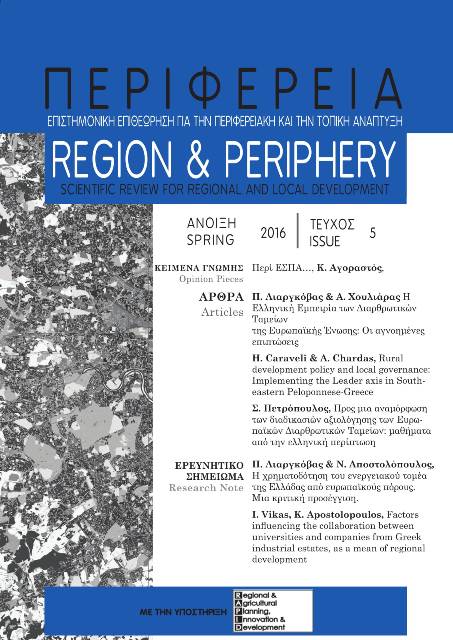Factors influencing the collaboration between universities and companies from Greek industrial estates, as a mean of regional development

Abstract
The industrial estates of Greece and their companies create poles of regional development and local innovation centers. The development of collaboration between universities and local business centers can benefit the local economy and society. The current research, spreads in 100 companies from 19 industrial estates of Greece. It aims to indicate important factors that influence the collaboration between universities and companies from greek industrial estates. The data were collected during 2013, through a structured questionnaire. Selected variables from the questionnaire were used in order to build a logistic regression model. The results indicate that the degree of collaboration between universities and companies is positively influenced by the number of employees in the company and by the degree of collaboration between the company and the local administration institutions. On the other hand, it is negatively influenced by the size of the industrial estate that the company operates and by the lack of company’s information knowledge.
Article Details
- How to Cite
-
Vikas, I., & Apostolopoulos, K. (2018). Factors influencing the collaboration between universities and companies from Greek industrial estates, as a mean of regional development. Perifereia | Regional Integration: Politics, Economics, Governance, (5), 89–100. https://doi.org/10.12681/rp.18490
- Section
- Research Note

This work is licensed under a Creative Commons Attribution-NonCommercial 4.0 International License.
Authors who publish with this journal agree to the following terms:
· Authors retain copyright and grant the journal right of first publication with the work simultaneously licensed under a Creative Commons Attribution Non-Commercial License that allows others to share the work with an acknowledgement of the work's authorship and initial publication in this journal.
· Authors are able to enter into separate, additional contractual arrangements for the non-exclusive distribution of the journal's published version of the work (e.g. post it to an institutional repository or publish it in a book), with an acknowledgement of its initial publication in this journal.
· Authors are permitted and encouraged to post their work online (preferably in institutional repositories or on their website) prior to and during the submission process, as it can lead to productive exchanges, as well as earlier and greater citation of published work.


